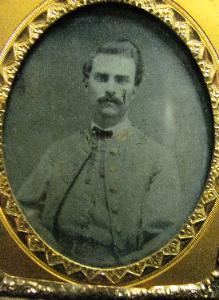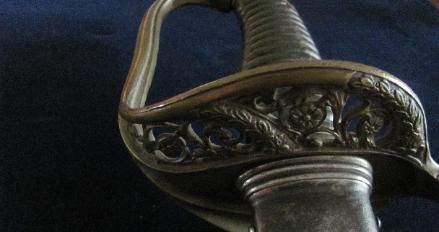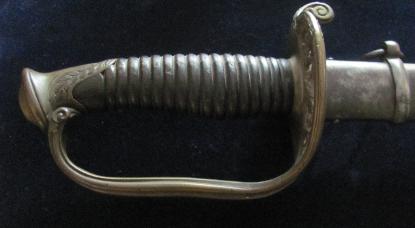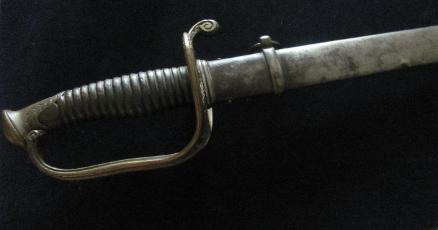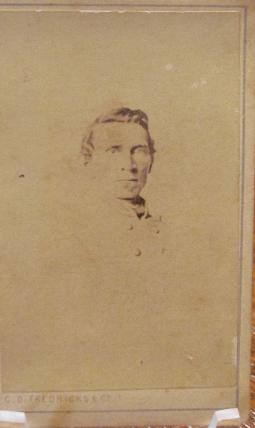
FLORIDA IN THE CIVIL WAR
FLORIDA CIVIL WAR MUSEUM
Florida is considered by many historians to be the forgotten state of the Confederacy. Florida's population in 1861, of 140,000, ranks it as the smallest of all the confederate states. The third state to secede, it would provide about 15,000 troops during the war. These troops would be organized into eleven infantry regiments, two cavalry regiments, a handful of artillery batteries and a variety of smaller organizations. Another important contribution to the Confederacy was the large amount of cattle the state provided to the Confederacy. Also with over 1300 miles of coastline a number of small salt distillers provided much needed salt for the war effort.
Florida units fought in most of the major battles during the war with brigades in the Army of Northern Virginia and the Army of Tennessee. Small units also defended the state from several Yankee invasions during the war and the capital, Tallahassee, remained un captured during the war.
Recommended reading: Florida During the Civil War by John Johns
A Small but Spartan Band by Zack C. Waters & James Demands
Thunder on the River by Daniel L. Chafer
The above books are available in our book store
FLORIDIANS ANSWER THE CALL
|
|
|
|
Thomas Martin Palmer |
J.B. Cason Second Florida Infantry |
These men, in the above broadside, would become Company K (Davis Guards) of the Second Florida Infantry. The 2nd Fla. served in the Army of Northern Virginia and participated in battles from the Seven Days until Appomattox. At Gettysburg it lost forty-two percent of the 242 men engaged. On April 9,1865 the Second Florida surrendered with 7 officers and 59 men.
James Felix Tucker was born December 2nd 1840 in New Albany, Indiana. In the mid 1850's his family moved to Florida and as a young man he attended the Georgia Military Institute. The 1860 census list him as living in Levy County and operating a steamboat on the Suwanee River. He enlisted 7/8/61 at Fernandina. He was described as "a young man of unusual moral worth. Although reared in the midst of the usual social incitements to indulgence, he is reported never to have tasted spirits, not tobacco, nor to have sworn an oath." Stephen Mallory, described him as "a soldier by education &
feeling; a young gentleman of great traits of character and ability". He was not reelected 5/11/62 and returned to Florida where he was appointed 2nd Lt and drillmaster 6/4/62 and was stationed at Tallahassee. Samuel St. George Rogers noted that he was "thorough in every department of drill, an admirable disciplinarian, in short I know of no more competent officer nor one more worthy of promotion." He was appointed 2nd Lt of Company D, 9th Florida Infantry 10/6/62 at Columbus FL and was appointed Captain 10/14/63. He was wounded in the thigh 6/3/64 at Cold Harbor trying to rescue Major Pickens Bird, who was mortally wounded. His hat was punctured by three bullets during that battle. Both men were rescued by Sgt P. N. Bryan and sent to Howard's Grove Hospital, Richmond. Tucker wrote a letter describing Pickens Bird's death to his family after the war. He was furloughed from Howard's Grove Hospital, Richmond 7/5/64 and was married soon after: "... while still on crutches, he was married... A notable fact of this wedding was that each groomsman was a wounded Confederate Soldier." Due to the scarcity of new cloth, his uniform was turned inside out and trimmed for the occasion. He remained in Florida till the end and was paroled 5/16/65 at Madison. He was 5'8.5", light hair, grey eyes, fair skin. He was the son of Tucker the blockade runner. He signed the "Confederate Hall" Register at the Cotton States Exposition in Atlanta in 1895.
Biographical material from Biographical Rosters Of Florida's Confederate Soldiers Broadfoot Publishing Company available in our bookstore
|
Lawrence Anderson |
Captain Henry Thomas Wright |
|
|
Captain Augustus McDonnell |
Captain Daniel Williams |
These men, in the above broadside, would become company I, the Jefferson rifles, of the (new) First Florida Infantry. The First Florida would see service at Santa Rosa Island Florida and most all of the major conflicts of the Army Of Tennessee from Shiloh and until the surrender in North Carolina on April 26, 1865. Consolidated with the Third Florida they would loose 26% of the 531 engaged at Murfreesboro and 34% of the 273 engaged at Chickamauga.
Daniel Boone Coleman enlisted at Bluff Springs and soon after died on 6/25/62
THE FLAG OF THE FERNANDINA VOLUNTEERS
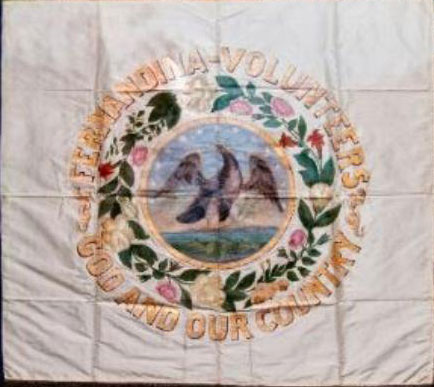

In 1859 as war clouds loomed Florida Governor Madison Starke Perry,a strong states rights advocate, called for a reorganization of the states militia. Almost overnight militia units responded all over the state. Fernandina, Florida was no exception. Fernandina on Amelia Island along Florida's northeast coast boasted a light house,a busy seaport,a railhead for the longest railroad in the state and a partially completed fort (Fort Clinch) on the north end of the island..According to the 1860 census, the population was listed at 1390 with 602 of those blacks, both slave and free. The citizens responded to Governor Perry's call, forming a militia company made up of residents of Fernandina and Nassau county. This company was under the command of Captain Joseph Rutledge Finegan , who would later become one of Florida's most prominent Civil War figures. Born 1814 in Clones, Ireland, he came to this country as a young man and served in the U.S. Army. Prior to the war he lived in Nassau County running a plantation and a sawmill. He was also a business partner with Florida Senator David Yulee in a railroading venture. In politics Joseph Finegan represented Florida in the Secession Convention voting for Secession. During the war he would rise to the rank of Brigadier General commanding troops in the state at Olustee where Confederate forces won a decisive victory over invading Union forces .In 1864 he commanded the Florida Brigade in the Army of Northern Virginia. As early as December 1860 the Fernandina Volunteers were primed and ready for action. Almost as if seeing into the future, on December 18th 1860, Captain Finegan wrote the mayor of Charleston South Carolina that at a recent meeting the volunteers had adopted a resolution that if it should become necessary to use force to obtain possession of the forts in Charleston Harbor he was willing to send a detachment of 25 men or more for that purpose. The election of Abraham Lincoln as president swelled the ranks of the Fernandina Volunteers and the volunteers quickly moved to seize Fort Clinch on the north end of the island. In a matter of days the volunteers were enrolled into service of the state of Florida. The Fernandina newspaper stated that the Volunteers "embraces among many of our oldest and influential citizens". On January 8th the Fernandina Volunteers were part of the forces that seized Fort Marion in Saint Augustine, Florida. Many of the guns there were quickly removed and transported to Fernandina. On January 10th, Florida succeeded from the union as the Volunteers quickly went to work mounting the guns in Fort Clinch and along the north end of the island between the fort and the ocean. Fernandina quickly became a boom town with troops from all over the state assembling there organizing for war.
It is not known exactly when the Charleston painter, C.W. Stiles, was commissioned to produce a flag for the Volunteers. The 1860 census list C.W. Stiles as a 38 year old Canadian native working in Charleston as a painter. The hand painted silk flag is signed and dated 1861. In May of 1861 Capt Finegan was appointed military advisor to Governor John Milton and resigned with Leonard Dozier Jr. quickly elected Captain of the unit. One source states the flag was presented to the group shortly after by Captain Dozier's daughters in a ceremony. One member, Benjamen W. Thompson, described the volunteers in his memoirs, "We met at the armory for drill and social purposes, an generally, had a good time. We added to our numbers by recruiting some Greek fishermen and some long shore men, and generally the Riff-raff of the town. We were cheaply uniformed in blue flannel shirts and gray jeans trousers with red flannel stripes. The men sang songs, fished from the wharf, played games and perpetuated jokes. The business men got excused to attend to business by day and did some night duty or hired black men in their place."With this lack of discipline it is easy to understand why members slowly began to join other units forming in the area. Some of the earliest are noted around April of 1861 with the Broome brothers, George and Robert joining the First Florida Infantry .It is not known when the Fernandina Volunteers officially disbanded but members slowly began to filter away. On February 24, 1862 the Captain, Leonard Dozier Jr. joined the Marion Light Artillery.
In early 1861 General Robert E. Lee under direction of Jefferson Davis inspected the coastal defenses from the Carolinas down to St. Augustine, Florida. In a letter to his daughters he remarked "I have been down the coast as far as Amelia Island to examine our defenses. They are poor indeed and I have laid off work enough to employ our people a month. I hope our enemy will be polite enough to wait for us. It is difficult to get our people there to realize their positions."Lee's inspection finally led to the conclusion that this part of Florida was of little strategic importance and too difficult to defend. In February 1862 he ordered that all troops should be withdrawn from the coastal areas. On March 1,1862 the evacuation started. Most of all the artillery pieces were removed and sent to secure locations inland. Eighteen were sent for the defense of Savannah, and fourteen guns that could not be removed were spiked. Colonel Edward D. Hopkins of the Fourth Florida issued a special notice on March 1st that a special train would leave the city expressly for the transportation of all women and children from the city on March 2nd. On Sunday March 2nd Union forces captured nearby Cumberland Island and this seemed to speed up the evacuation of the city. By 2:30 pm the following day the Confederate forces were moving out of the city. Union forces entered the harbor on march 3rd in what was called the largest amphibious action in U.S. History as the last inhabitants were leaving. The last train leaving the city was spotted on a track that ran alongside the river and chase was given by the U. S. Gunboat Ottawa signaling the engineer to stop. An eyewitness stated that "the passengers hooted, jeered, and waved handkerchiefs derisively from the car windows and the gunboat fired several shots at it, aiming at the locomotive." One shell killed two men on a flatcar, but the train arrived safely on the mainland. Shortly after the river steamer Darlington was spotted trying to escape the union gunboats. The Darlington was a 298-ton side-wheel steamship built at Charleston South, Carolina in 1849. It was owned by Jacob Brock a transplanted Vermont native who ran a steamship line between Charleston, Savannah, and the Florida coastal towns hauling freight and baggage. The following is the report of commander Percival Drayton of the U.S.S. Pawnee. "A small steamer was discovered attempting to escape up the narrow creek over which the railroad bridge passes, the draw which she had went through shortly after the train had crossed. Several shots were fired at her without effect, and as the Ottawa could not go up the creek, Commander Rogers followed her with two of his armed boats, captured and brought her alongside. She was found to be filled principally with women and children, but also had on board a surgeon in the Confederate Army and a number of mules and wagons belonging to the Quartermaster's Department."
It was probably from the captured baggage on the Darlington that William H. Rutherford (chief engineer on the U.S.S. Pawnee) obtained the Fernandina Volunteers flag. Wide spread looting was also reported in Fernandina but since Rutherford was directly involved in the capture of the Darlington and her baggage it was there that he likely came into possession of the flag.
William H. Rutherford was a career naval officer born in Philadelphia on January 1, 1828. He entered Naval service as an assistant engineer in 1849 serving with M.C. Perry on the Pacific coast survey and on the expeditions to Japan and South America. He served in actions from the Potomac to Louisiana figuring in many battles and was involved in the capture of the privateer Florida. After the war he served on Indian and European stations and then at the Pensacola Navy Yard before retiring on October 26, 1874. On March, 1898 at the age of 70, William Rutherford passed away and was buried in Washington D.C.
The flag was purchased from his descendants in Florida.
|
William H. Rutherford chief engineer U.S.N. |
Brigadier General Joseph R. Finegan C.S.A. |
|
3.4 Hotchkiss shell fired from a 3.4 inch Dahlgren boat howitzer |
The steamer Darlington depicted, after it's capture, |
BRIGADIER GENERAL EDWARD A. PERRY'S COLT ARMY
COMMANDER OF THE FLORIDA BRIGADE IN THE ARMY OF NORTHERN VIRGINA
GOVERNOR OF FLORIDA

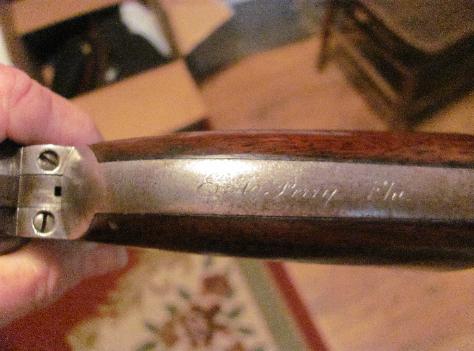
|
|
Edward Alysworth Perry was born March 15, 1831 on a farm near Richmond, Massachusetts. His family roots dated back to the early 1600's when his family first settled in New England. After attending Yale for two years he left in 1852 and moved south first settling in Georgia and later in Alabama where he taught school and studied law. |
In July,1861 the Rifles were mustered into confederate service becoming Company A, Second Florida Infantry in the Army of Northern Virginia. The Second Florida saw it's first action in the defense of Yorktown and in fighting at Williamsburg where the Colonel George T Ward was killed. On May 10, 1862 Perry was elected Colonel taking George Ward's place. At the head of the regiment Colonel Perry was wounded during the bloody fighting at Frayser,s Farm during the 7 day battles before Richmond. The Second Florida suffered heavy casualties during the 7 days loosing 65 killed and 285 wounded. After recovering from his wounds Perry was back in command by September 1862. In November the 2nd, 5th, and the 8th Florida were organized into the Florida Brigade under the command of Perry who had been promoted brigadier general. This new unit became part of Anderson's Division of Longstreet's First Corps. General Perry commanded the Florida Brigade at Fredricksburg in December 1862 and at the Chancellorsville in May, 1863. Sometime after Chancellorsville Perry contacted typhoid fever and missed the Battle of Gettysburg returning after the campaign was over. He was back in command by the Battle of the Wilderness where he was severely wounded on May 4th 1864 forcing him to retire and serve with reserve forces in Alabama until the end of the war.
For the next 20 years following the war Edward Perry would devote his life to his law practice and family, raising 5 children in Pensacola. His favorite pastimes were playing poker and fishing in the Gulf.
In 1884 he successfully ran for governor and was elected. Under his leadership Florida would adopt a new State Constitution ,establish a State Board of Education, and provide pensions for it's Civil War veterans. When he turned the reins of government over to his successor Francis P. Fleming four years later the state treasury showed a balanced budget with a balance in the black. Perry returned to private life and while on a trip to visit his sister in Texas he suffered a stroke and passed away on October 15, 1889. His body was returned to Pensacola and interred in St. Johns Cemetery.
|
E. A. PERRY |
E.A. PERRY |
THE SWORD OF CAPTAIN ROBERT A. WALLER CO. B EIGHTH FLORIDA INFANTRY
KILLED IN ACTION SEPTEMBER 17, 1862 ANTIETAM, MARYLAND
|
|
Robert Aurelius Waller was born in Greenwood County, South Carolina in 1837 the son of Albert and Elizabeth Creswell Waller, both native South Carolinians. Robert Waller enlisted in Company B 8th Florida Infantry on May 10th 1862 at Quincy Florida. He would see action with the Florida Brigade during the 7 Days Battles and 2nd Manassas. At Antietam Captain Waller was killed while leading the 8th Florida with the regimental colors draped over his shoulders. Robert Waller is buried in the Washington Confederate Cemetery in Hagerstown, Maryland. |
|
|
|
CAP BOX CARRIED BY JOHN B. JACKSON CO. K. 7TH FLORIDA INFANTRY
John Brown Jackson was born October 23, 1845 in Hillsborough County Florida. He enlisted on April 11, 1862 at the age of 17 at Tampa Florida as a private. He served with the Army of Tennessee and was wounded November 25, 1863 at Missionary Ridge. After recovery he was transferred along with other members of Company K to the C.S. Navy and served on the CSS MACON and the CSS SAVANNAH until the surrender. He passed away in 1921 at the age of 76 and is buried in Oaklawn-St. Louis Cemetery Tampa, Florida.
|
|
|
|
|
|

Half Plate Ambrotype |
John A. Bethell was born on July 21, 1834 in Key West Florida John Bethell and his family were some of the early settlers of Pinellas Point (St. Petersburg) Florida. He was teaching school at the outbreak of the war and quickly enlisted in Captain Mulrennan's Coast Guard unit and was elected coxswain on February 1, 1862. In April these men were mustered into Co. K 7th Florida at Tampa and in January 1863 he was promoted to 2nd Lt. He served with the Army of Tennessee in all the campaigns until February when he resigned and enlisted in the C.S. Navy. After the war he ran a small store and made a living as a fisherman at Point Pinellas. One year prior to his death on April 12, 1915 he published a history of Point Pinellas Florida. It was said at the time of his death that throughout his life he never complained of illness, and when he died he suffered from no recognizable disease. The doctor in attendance declared, "He just passed away , like a piece of machinery, worn out." He is buried in Greenwood Cemetery St.Petersburg, Florida . |
SWORD OF 1ST. LIEUTENANT ANDERSON J. PEELER
5TH FLORIDA INFANTRY
WOUNDED AND CAPTURED GETTYSBURG JULY 2, 1863
|
|
|
|
|
|
|
|
"Lt. A.J. Peeler - Florida Presented by Col. J.J. Williams Tallahassee, May 23d, 1862" Anderson James Peeler was born April 22, 1838 in Harris County Georgia. It is unclear when he moved to Florida but he is listed on the 1860 census as living and practicing law in Tallahassee, Florida. Peeler served as Chief Clerk of the Florida House of Representatives during the 1860 and 1861 sessions. |
On April 23, 1862 he enlisted as a private in company "I" 5th Florida infantry at Camp Anderson , Florida. On May 23, 1862 he was promoted to 3rd Lieutenant. It was at this time that Joseph John Williams presented the French foot officers sword to A.J. Peeler. The connection to Lt. Peeler is unknown at this time. J.J. Williams owned five plantations in the Tallahassee area and was a Florida State Representative from Leon County in 1860.
The 5th Florida left the state and arrived in Virginia and was assigned to Pryor's brigade which consisted of the 2nd Florida, 12th Virginia and 14th Alabama. The first action for the 5th Florida was in the battle of 2nd Manassas August 30,1862. Lieutenant A.J. Peeler served with distinction at 2nd Manassas, Harpers Ferry, Antietam, Fredricksburg, and Chancellorsville .On February 21, 1863 he was appointed 1st. Lieutenant. At Gettysburg the Florida Brigade was in R.H. Anderson's Division in General A.P. Hill's 3rd Corp. The Florida Brigade, commanded by Colonel David Lang in place of the ill Gen. E.A. Perry, arrived late afternoon of the first day and went into position in the line on Herr Ridge. In the early morning of July 2nd Anderson's Division was ordered to Seminary Ridge and was positioned on the Eastern edge of the Spangler woods. Late in the afternoon the Floridans began General Lee's planned assault on the Union line on Cemetery Ridge. A fellow soldier describes Lieut. Peelers efforts in this action "A braver man than Lieut. Peeler never breathed. He dashed up and down the line, hurrahing, and encouraging the men on, and keeping the line dressed on Wilcox. He was wounded by a grape-shot and stunning him awhile, but after recovering, he advanced cheering on the men, and setting them an example worthy of imitation....until he was again shot down by a minie ball, wounding him seriously in the head, he was carried to the rear where he fell into the hands of the enemy."
After Lt. Peeler's capture he was confined to the College Hospital and the Camp Letterman hospital while he recovered from his wounds. A. J. Peeler wrote the following in the journal of one of the young girls that provided care during his time in the hospitals in Gettysburg.
Camp Letterman
Genl. Hospl., Gettysburg Pa., U.S.
Aug. 4th, 1863
Miss Goldsborough,
In placing my autograph in your book, I cannot allow the opportunity to pass of at the same time expressing for myself and my wounded and sick comrades the heart-felt gratitude we feel for your kindness to us here and at the College Hospital. Prisoners and strangers in a strange land, many whose fevered brows you bathed and to whose wants you have ministered with such indefatigable attention will long treasure in their hearts and memory you name and kind deeds with a feeling of sacred friendship.
I hope the fortunes of war may never be such as to throw us together under similar circumstances again but if such should be the case I can only hope that I may meet with one like yourself whose social attractions as a lady and cheering words and kindly sympathy has contributed so much to beguile the many weary hours of my almost unendurable situation. For I assure you our "College days" are the green spot of the days of my captivity. The greatest sacrifice you have made was to have humbled your proud spirit to meeting as social equals and treating with respect those whose conduct in the war have shown them to be enemies of "Woman", oppressors of woman, and destitute of manliness and true honor. May the day soon come when this unhappy war shall close with triumph to our arms and cause and when your friends, the "Florida Boys" shall have the pleasure of greeting you in the sunny south, the " land of flowers" where by every means in their power they will be happy to show by acts what they feel at heart - their appreciation of your kind attention.
"My native land I turn to you
With blessing and with prayer
Where man is brave and woman too.
As free as mountain air."
Lt. A.J. Peeler
Perry's Florida Brigade
That young lady was Euphemia Mary Goldsborough from Baltimore, Maryland. Miss Goldsborough was devoted to the southern cause and tirelessly nursed wounded soldiers after South Mountain, Antietam and Gettysburg. She was also devoted to the underground efforts to smuggle food, supplies and medicines to confederate soldiers held in northern prisons and hospitals. She was later arrested by Yankee soldiers and banished to Richmond for the remainder of the war.
After partial recovery Lt. Peeler was set to Johnson's Island prison camp in Ohio. He remained there until his exchange March 14, 1865. When the war ended he returned to Tallahassee where he worked as an attorney and worked to end the radical carpetbag rule that was in control of Florida. He also served as a State Representative from Leon County in the 1865 and 1866 sessions. The 1870 census list him working as a lawyer and with a wife, Elizabeth and 3 children living in Tallahassee. Sometime before 1876 Anderson J. Peeler and his family moved to Austin, Texas where he continued to practice law. He would also serve as an Assistant State's Attorney and on the Board of Regents of Texas A&M University. He passed away on October 31, 1886 and is buried in Oakwood Cemetery, Austin Texas.
Recommended Reading:
A Small but Spartan Band by Zack Waters and James Demands
Exile to Sweet Dixie The Story of Euphemia Goldsborough Confederate Nurse and Smuggler
by Eileen F. Conklin
|
LT. JOEL BLAKE
Born in 1831 in Leon County Florida he enlisted Feb. 20 1862 at Tallahassee and was killed July , 1863 at Gettysburg, Pennsylvania. His body was so completely mutilated that it was never found. According to family tradition , on the day of his death his mother was eating dinner when she screamed, "Oh my God my Joel is dead. |
CAPTAIN ANDREW JACKSON LEA
Born in North Carolina, Andrew Lea represented Madison Co. at the Florida Secession Convention .He enlisted March 26, at Madison Fla .and resigned Oct. 31, 1862. |






